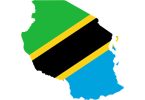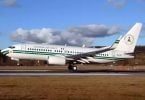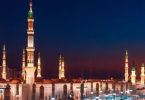There are many trans-boundary tourism experiences across the Southern Africa region, particularly, in the Transfrontier Conservation Area (TFCA). A TFCA is a component of a large ecological region that straddles the boundaries of two or more countries encompassing one or more protected areas as well as multiple-use areas. Many renowned tourism destinations are situated within TFCAs, positioning them as prime areas for development of tourism which has the great potential to generate employment in the rural areas, thereby contributing to poverty reduction.
The TFCAs work as an efficient mechanism of regional collaboration and cooperation in biodiversity conservation and ecosystems, landscapes, and shared wildlife resources management, which benefits tourism activities. The potential benefits of the promotion of regional conservation, serves as a foundation to achieve the socio-economic development through sustainable use of shared natural and cultural resources.
The United Nations Environment Program World Conservation Monitoring Centre (UNEP-WCMC) and the International Union for Conservation of Nature list all conservation areas worldwide. In 2007, UNEP-WCMC published a list of 227 worldwide Transfrontier Conservation Areas covering over 4.6 million km². Transfrontier Conservation Areas within the Southern Africa region covers over 700,000 km².
Today we visit the TFCAs and trans-boundary tourism product of three of the fifteen countries in the Southern Africa region. All share borders so that a trip to all three areas would not only be feasible, but a wise decision, as to holiday in just one country when one is already in the Southern Africa region, would be missing a wonderful opportunity to create a trip of a lifetime.
The Southern Africa region includes the countries of Angola, Botswana, Democratic Republic of Congo, Lesotho, Madagascar, Malawi, Mauritius, Mozambique, Namibia, Seychelles, South Africa, Swaziland, Tanzania, Zambia, and Zimbabwe. Spotlighted in this article are Angola, Namibia, and Botswana.
Angola
The largest inland delta in the world and the biggest Transfrontier Conservation Area in the world, lies in Angola with breathtaking falls, the largest contiguous population of African elephant, and the highest concentrations of wildlife on the African continent. Here, there are huge baobab trees, Iron and Stone Age sites, San rock paintings, lagoons, lakes, and hidden channels. Activities sure to enthrall visitors include bungee jumping, kayaking down rapids, helicopter rides, and white-water rafting.
The Kavango Zambezi Transfrontier Conservation Area is situated in the Okavango and Zambezi River basins where the borders of Angola, Botswana, Namibia, Zambia, and Zimbabwe converge. It spans an area of approximately 287,132 square kilometers and includes 36 national parks, game reserves, community conservancies, and game management areas.
Natural attractions, activities, and highlights of the Kavango – Zambezi include the Zambezi River, Okavango Delta, Victoria Falls, Chobe National Park, Makgadigadi Pans, Caprivi strip, Wildlife, San Rock Paintings, and adventure tourism.
Namibia
The /Ai-/Ais – Richtersveld Transfrontier Park straddles the borders of South Africa and Namibia. It consists of the 1,625-square-kilometer Richtersveld National Park (a World Heritage site) in South Africa and the 4,420 square kilometers of /Ai–/Ais National Park in Namibia.
Wandering through even just part of its combined 6,045 square kilometers, visitors will be mesmerized by some of the most spectacular arid and desert mountain scenery in southern Africa. The world’s second largest canyon, the Fish River Canyon, meanders for 161 kilometers between the steep spectacular cliffs dividing the Nama plateau. In some places, the canyon floor is more than 550 meters below the plateau, exposing rock up to 260 million years old. Stare down at ancient history weathered by an eternity of sun, wind, and strong river currents. Climb down, if you’re an intrepid adventurer, and touch the passage of time.
Natural attractions, activities, and highlights of the /Ai-/Ais – Richtersveld include the Orange River, Fish River Canyon, /Ai-/Ais Hot Water Springs, wildlife, vegetation, and culture.
Botswana
The red-brown sands of the Kalahari Desert, medicinal plants, 60 species of mammals, the unique Kalahari lions, the world’s fastest animal on land, the world’s heaviest flying bird, 52 of the 80 raptors recorded in South Africa, exciting wilderness trails, the traditional Khomani San – this is the Transfrontier Conservation Area of Botswana. What better place to be than in the middle of nowhere?
The Kgalagadi Transfrontier Park straddles the borders between South Africa and Botswana and consists of the former Gemsbok National Park in Botswana and the former Kalahari Gemsbok National Park in South Africa. Kgalagadi, which includes the largest expanse of continuous sand mass in the world, is known as “Place of Thirst.” It’s a remarkable place of shimmering heat and sand that seemingly stretches beyond the horizon, a great and humbling space whose vastness makes visitors realize that we are all but grains of sand in the grand scheme of things.
Natural attractions, activities, and highlights of the Kgalagadi include the desert and solitude, wildlife, and wilderness trails.
How to get there
If one were to begin their trip in Angola, Luanda International Airport (LAD) is the current international airport serving Luanda and the rest of Angola. It is soon to be replaced, however, by the new Angola International Airport. The current Luanda airport offers direct flight links to neighboring South Africa, Namibia, and Mozambique. The Angolan National Airline: TAAG Angola Airline also flies to many destinations throughout Africa and Portugal. Domestic routes cover over 40 local airports around Angola. From Angola, heading to Namibia, there are flights as already mentioned from Luanda airport to Hosea Kutako International Airport, the main international airport serving the Namibian capital city of Windhoek, and from Namibia to Botswana’s main airport, Sir Seretse Khama in Gaborone.
About Retosa
The Regional Tourism Organization of Southern Africa (RETOSA) is a Southern African Development Community (SADC) institution responsible for tourism growth and development. In part, the aims of RETOSA are to increase tourist arrivals to the region through sustainable development initiatives, improved regional competitiveness, and effective destination marketing. The organization works together with Member States’ tourism ministries, tourism boards, and private sector partners. For more information about RETOSA, go to www.retosa.co.za
(eTN): Trans-boundary tourism experience across Angola, Botswana and Namibia | re-post license | post content






















